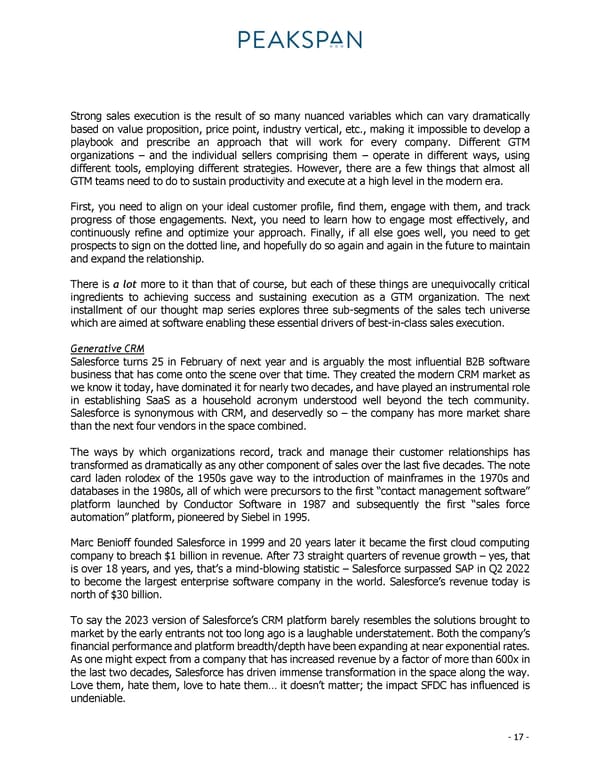Strong sales execution is the result of so many nuanced variables which can vary dramatically based on value proposition, price point, industry vertical, etc., making it impossible to develop a playbook and prescribe an approach that will work for every company. Different GTM organizations – and the individual sellers comprising them – operate in different ways, using different tools, employing different strategies. However, there are a few things that almost all GTM teams need to do to sustain productivity and execute at a high level in the modern era. First, you need to align on your ideal customer profile, find them, engage with them, and track progress of those engagements. Next, you need to learn how to engage most effectively, and continuously refine and optimize your approach. Finally, if all else goes well, you need to get prospects to sign on the dotted line, and hopefully do so again and again in the future to maintain and expand the relationship. There is a lot more to it than that of course, but each of these things are unequivocally critical ingredients to achieving success and sustaining execution as a GTM organization. The next installment of our thought map series explores three sub-segments of the sales tech universe which are aimed at software enabling these essential drivers of best-in-class sales execution. Generative CRM Salesforce turns 25 in February of next year and is arguably the most influential B2B software business that has come onto the scene over that time. They created the modern CRM market as we know it today, have dominated it for nearly two decades, and have played an instrumental role in establishing SaaS as a household acronym understood well beyond the tech community. Salesforce is synonymous with CRM, and deservedly so – the company has more market share than the next four vendors in the space combined. The ways by which organizations record, track and manage their customer relationships has transformed as dramatically as any other component of sales over the last five decades. The note card laden rolodex of the 1950s gave way to the introduction of mainframes in the 1970s and databases in the 1980s, all of which were precursors to the first “contact management software” platform launched by Conductor Software in 1987 and subsequently the first “sales force automation” platform, pioneered by Siebel in 1995. Marc Benioff founded Salesforce in 1999 and 20 years later it became the first cloud computing company to breach $1 billion in revenue. After 73 straight quarters of revenue growth – yes, that is over 18 years, and yes, that’s a mind-blowing statistic – Salesforce surpassed SAP in Q2 2022 to become the largest enterprise software company in the world. Salesforce’s revenue today is north of $30 billion. To say the 2023 version of Salesforce’s CRM platform barely resembles the solutions brought to market by the early entrants not too long ago is a laughable understatement. Both the company’s financial performance and platform breadth/depth have been expanding at near exponential rates. As one might expect from a company that has increased revenue by a factor of more than 600x in the last two decades, Salesforce has driven immense transformation in the space along the way. Love them, hate them, love to hate them… it doesn’t matter; the impact SFDC has influenced is undeniable. - 17 -
 Sales Tech Thought Map Series Page 17 Page 19
Sales Tech Thought Map Series Page 17 Page 19
